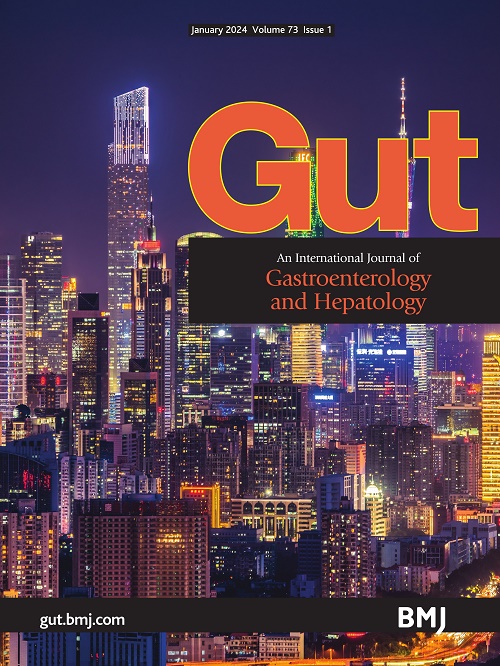很多关于EoE
IF 23
1区 医学
Q1 GASTROENTEROLOGY & HEPATOLOGY
引用次数: 0
摘要
1996年,Kelly等人的一项具有里程碑意义的研究表明,将患有食管嗜酸性粒细胞增多症的儿童置于元素饮食中,即不含所有食物抗原的饮食,可导致组织学和症状正常化在过去的三十年里,对嗜酸性粒细胞性食管炎(EoE)的简单理解已经从一个独幕剧演变成一个涉及多个场景和演员的高度复杂的戏剧。最近在Gut上,Santacroce等人仔细而优雅地阐述了EoE发病机制的可理解和令人兴奋的观点。粗略地说,提出了三种促进EoE病理生物学的行为:屏障功能障碍、炎症和组织重塑。观察到大蛋白抗原和病原体可以穿透食管上皮是一个新概念导致抗原渗透的屏障功能障碍在病理上表现为细胞内间隙的扩张,在生理上表现为渗透性增加,在机械上表现为细胞粘附蛋白(如紧密连接和桥粒)的破坏。这种扰动的起始事件尚不清楚,但其范围从局部上皮微生物对紧密连接的影响到环境毒素造成的粘膜损伤和上皮基底区的超增殖反应。特定的基因变异,例如……本文章由计算机程序翻译,如有差异,请以英文原文为准。
Much ado about EoE
In 1996, a landmark study from Kelly et al demonstrated that placement of children with oesophageal eosinophilia on an elemental diet, that is, a diet devoid of all food antigens, led to histological and symptomatic normalisation.1 Over the past three decades, this simple understanding of eosinophilic oesophagitis (EoE) has evolved from a one-act play to a highly complex drama involving multiple scenes and actors. Recently in Gut, Santacroce et al 2 carefully and elegantly illustrated an understandable and exciting view of the pathogenesis of EoE. Roughly, three acts were presented to advance the pathobiology of EoE: barrier dysfunction, inflammation and tissue remodelling. The observation that large protein antigens and pathogens can penetrate the oesophageal epithelium is a novel concept.3 Dysfunction of this barrier leading to antigen penetration is manifest pathologically by dilation of intracellular spaces, physiologically by methods that demonstrate increased permeability and mechanistically by disruption of cell–cell adhesion proteins such as tight junctions and desmosomes. The initiating events for this perturbation are unclear but they range from localised epithelial microbial effects on tight junctions to mucosal damage from environmental toxins and a hyperproliferative response of the epithelial basal zone. Specific gene variations such …
求助全文
通过发布文献求助,成功后即可免费获取论文全文。
去求助
来源期刊

Gut
医学-胃肠肝病学
CiteScore
45.70
自引率
2.40%
发文量
284
审稿时长
1.5 months
期刊介绍:
Gut is a renowned international journal specializing in gastroenterology and hepatology, known for its high-quality clinical research covering the alimentary tract, liver, biliary tree, and pancreas. It offers authoritative and current coverage across all aspects of gastroenterology and hepatology, featuring articles on emerging disease mechanisms and innovative diagnostic and therapeutic approaches authored by leading experts.
As the flagship journal of BMJ's gastroenterology portfolio, Gut is accompanied by two companion journals: Frontline Gastroenterology, focusing on education and practice-oriented papers, and BMJ Open Gastroenterology for open access original research.
 求助内容:
求助内容: 应助结果提醒方式:
应助结果提醒方式:


